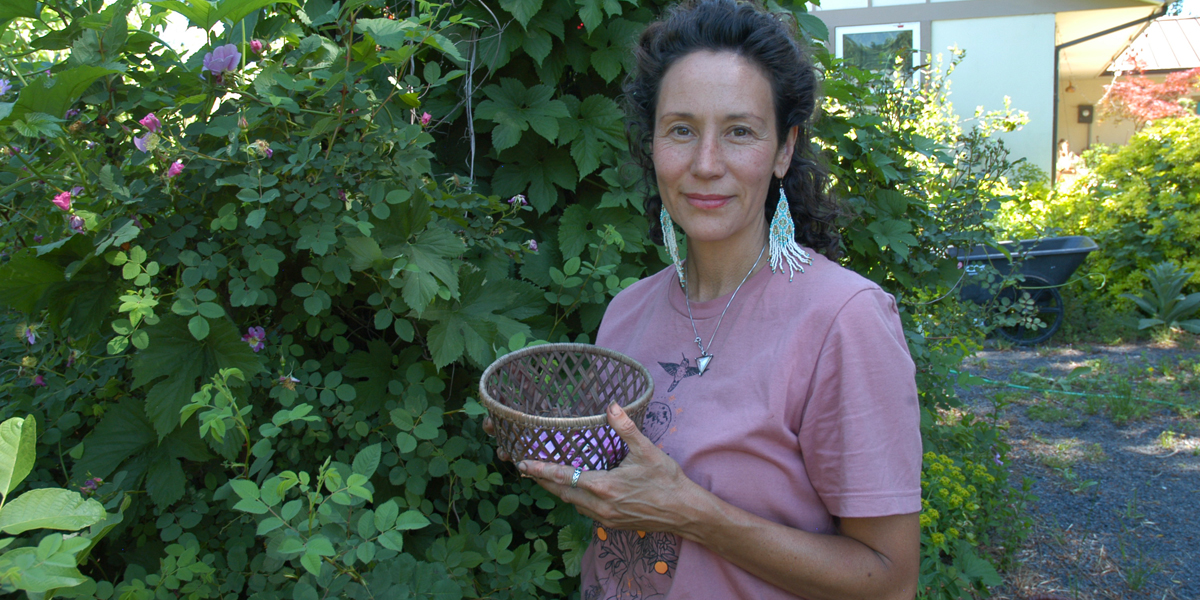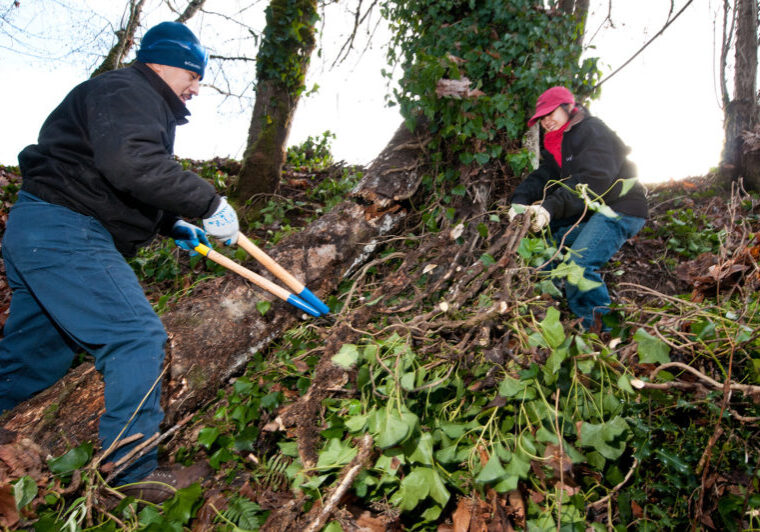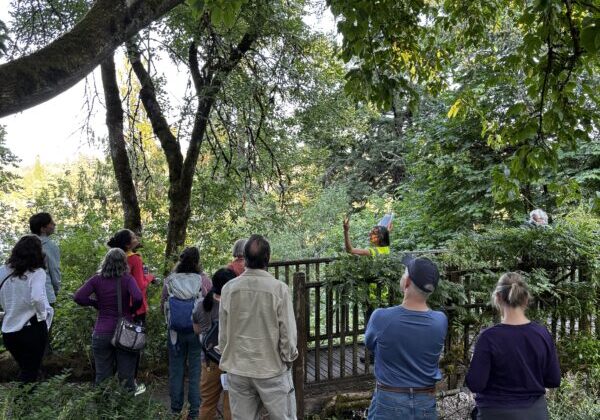We had the pleasure and honor of talking recently with Jennifer Rose Marie Serna, a Latina folk herbalist, mother, regenerative farmer, land activist, skill educator, and owner of Wapato Island Farm, to learn more about what she and her farm family and community have been creating on the island since West Multnomah Soil & Water Conservation District first began working with her a decade ago.
Jennifer’s family roots originate in coastal Mexico, the southwest U.S., and Ireland. She and her family have been on the farm since 2005, arriving just after the birth of her third child. Wanting to be close to their grandchildren, Jennifer’s parents purchased the land on Sauvie Island where they could all live. They named it Wapato Island Farm in honor of the original inhabitants, the Multnomah tribe of Chinookan people, and their name for the island before it was renamed Sauvie Island. Wapato is a native tuber plant that grows on the island and was an important staple crop for the tribe and others that lived on the island during harvest season.
In the early years of the farm, the Serna family was required to complete a grass seed contract already in place with the previous owners. During that time, Jennifer was able to start the herb garden, which thrives today. She was also busy caring for her now four children, the youngest of which was born on the farm. “In that way, we began to prepare the land,” recalls Jennifer.
After the contract was released, they transitioned to organic farming and began to seek certification with help from Sauvie Island Organics (now Sauvie Island Growers). The 32-acre property is now fully certified organic through Oregon Tilth.
In 2011, Jennifer first reached out to West Multnomah Soil & Water Conservation District to participate in a pollinator hedgerow project on Sauvie Island where sites were planted with rows of native flowering plants and shrubs to provide food and habitat for hummingbirds, bees, wasps, butterflies, and other pollinating animals. Several years later, we began to connect farmers with cover crop seeds and technical assistance for cover cropping, and Jennifer was one of the first farmers to get involved.
From cover crops to harvest crops
Spring oats were in the mix of cover crop seeds Jennifer used, and over time she allowed the oats to reseed themselves, instead of following the typical practice of turning the cover crops into the soil to retain nutrients for other plants. Now one of the farm’s primary crops is milky oats, along with around 50 different herbs and 10 different kinds of mushrooms, all for making folk medicine.
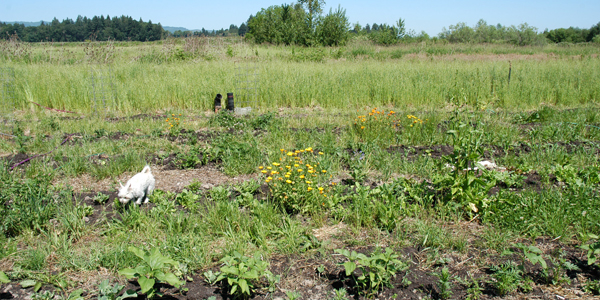
“We have about two and a half, three acres of milky oats, which for us is a lot to give to one plant,” Jennifer explains. “We try to follow indigenous style of growing so we don’t want to mono crop. To give that much land to one plant, we feel it’s very, very important.” And the early cover cropping helped the farm get to where they are today. “We have people come out to gather when the milky latex is ready. We let them take as much as they want for personal use. It’s so amazing to have had access to the seeds. What you offered to us, we’re able to offer so much medicine to so many people.” Jennifer describes the benefits of the plant and compares its role to that of a medical specialist. “You have your general practitioner doctor and then you have your specialists. The milky oat is a specialist for the nervous system. It rebuilds the myelin sheath of the nervous system and it continues rebuilding even when it’s out of your system. And it helps you feel calm and relaxed but it doesn’t make you tired. It actually gives you energy. And it’s oat tops for tea, and oats for cooking…it’s a really amazing plant! That’s why we grow so much of it and why we offer it to the community.”
Their method for farming mushrooms is quite different than growing vegetable and medicinal crops. For the varieties that prefer to grow in rye, the rye is first pressure cooked to make the sugars more available for the mushrooms. The mash is inoculated with spawn from the abundant spawn bank and then layered into a 5-gallon bucket with more rye grains. The mushrooms sprout out holes in the sides of the bucket where they are collected for drying and use in medicines. As opposed to many mushroom sprouting kits, the Wapato Island Farm creates its own substrates and uses little to no single-use plastic. The spent mushroom material goes into the compost, and then into the soil where it has helped amend the clay-heavy soil into a nutrient rich mix with a thriving mycelial network.
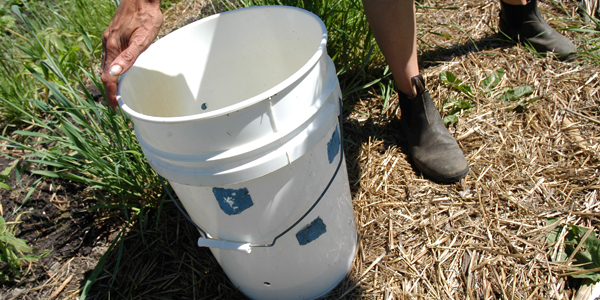
Community and exchange
Much like the mycelial network helps create rich fertile soil, the community of people on the farm is so important to helping it thrive. “We skill share and teach people how to make folk medicines, and we work with the community in other ways too. I don’t really understand how folks can work in the business of plants and seeds and not involve social justice, so we do a lot of that as well, and do our best to honor the land. And be kind,” Jennifer says, with a warm, easy laugh.
While deeply thoughtful and kind herself, Jennifer is also resolute in her leadership. She is building a culture of exchange and commitment on the farm, one that creates opportunity for the land and fosters learning, dedication to the rigors of farming, and allows knowledge to be passed down for generations. “There needs to be elders coming in and being like ‘Okay, this is what’s up. This is how you do it. Are you going to be here at nine or are you going to be here at six a.m.?’ There needs to be that container for people.”
“Receiving is beautiful, giving is beautiful, but there has to be both. I have some really amazing seeds I was gifted – four corn seeds from Guatemala.” She reflects on the work it took to grow and harvest the corn, and what it took for the corn to find its way to her. “That whole village is no more. It’s gone. And they wanted to make sure that their seeds were carried forward to a new place. So when I’m able to share those seeds or other seeds, I’m happy to give them, but there has to be understanding of an exchange. It doesn’t have to be money. They can make an offering to the pond, and that can be a song, that can be a stone that they found, that can be weeding, whatever it is.”
This kind of dedication to growth and connection to the land leads to opportunity for people as well. Jennifer is contemplating large next steps, “How can we get affordable housing here on the island?” Island farm workers live in the Portland area but often quite far from the farms where they work. “How can we get garden space for folks to bring their seeds over and grow food important to their culture?” Jennifer provides a number of small plots near the farmhouse for community members to grow culturally significant plants and foods, but she says she is maxed out. The farm also hosts a traditional temazcal sweat lodge for use by the Mayan community.
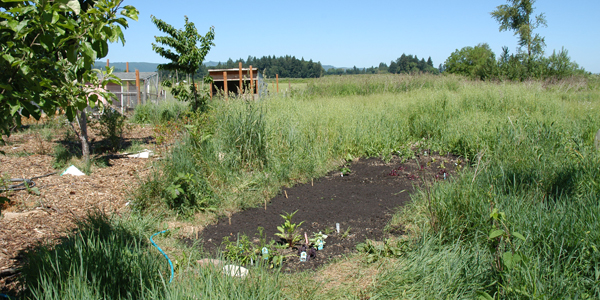
Honoring the land
One way Jennifer and the community at Wapato Island Farm honor the land is with low impact indigenous farming methods. Their large number of regular volunteers allows them to hand broadcast seeds, hand water or use small sprinklers, and use broadforks instead of tractors to turn the soil, which avoids compaction and fuel use by tractors, and more closely follows indigenous practices.
The farm is currently leasing several acres to outside farmers who do use many of the practices that align with Jennifer’s values, though also still use tractors. Jennifer envisions moving the entire farm to indigenous practices. “Eventually, as we grow together with a group of people, those practices will shift and we can be tending this whole land in a way that feels really good. Many children down the road will hopefully be able to benefit.”
Honoring the seeds and the plants
Jennifer finds great importance in having a relationship with the plants she grows. To her, it’s about much more than just using a plant for its medicinal properties. She believes to grow your own food is nurturing for your spiritual and your physical self and it reminds people what it means to be human. It helps us appreciate the work required for basic human needs. “To do that means you are taking time to grow your own food, because we all need to eat. If you’re in an apartment, that’s okay you can grow some stuff in there. You are taking time to honor these seeds in a good way.” And this need for appreciation and relationship extends to “everything from the foods, to the medicine, to our structures that we live in, to our clothes” she says, and as a culture we’re not there yet. “We’re distracted in so many ways with screens and digital lifestyles…it’s miles to go…”
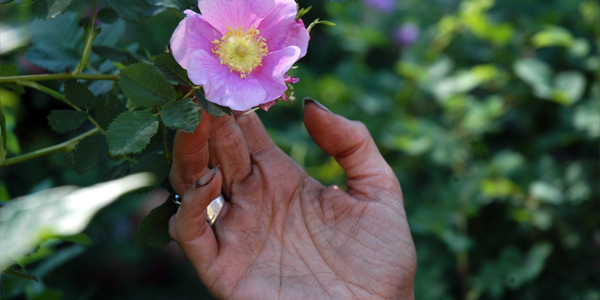
Where to find Wapato Island Farm and their medicines
Wapato Island Farm is at the Montevilla Farmer’s Market every Sunday except the third Sunday, the Come Thru market which is BIPOC-only vending (open to all for visiting), and the Sauvie Island market on the second Sunday, May-October.
They also have volunteers on the farm every Tuesday from 1 p.m. to 5 p.m. Visit their website: https://www.wapatoislandfarm.com/
And be inspired by their photos on Instagram: https://www.instagram.com/wapatoislandfarm/
